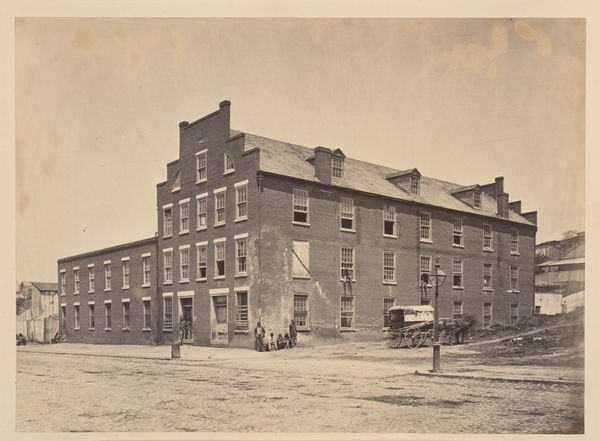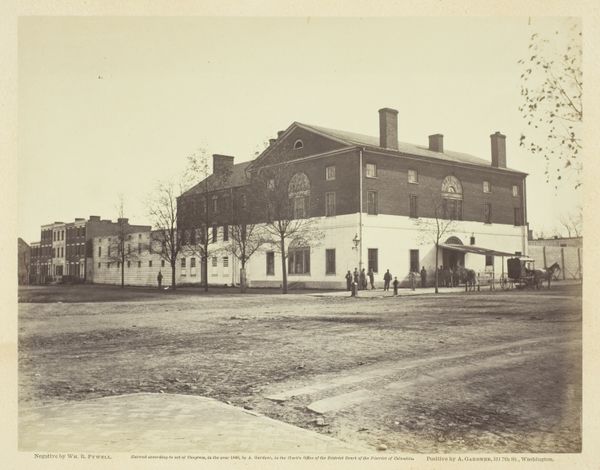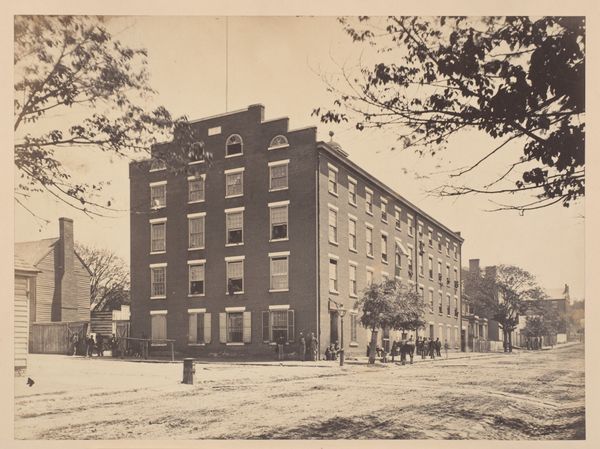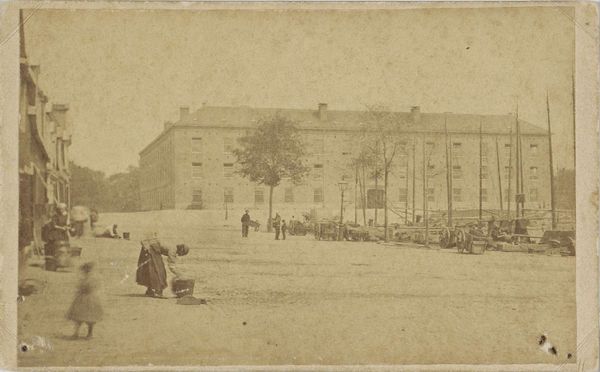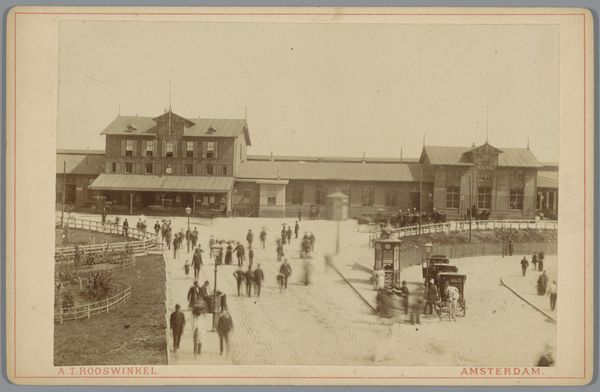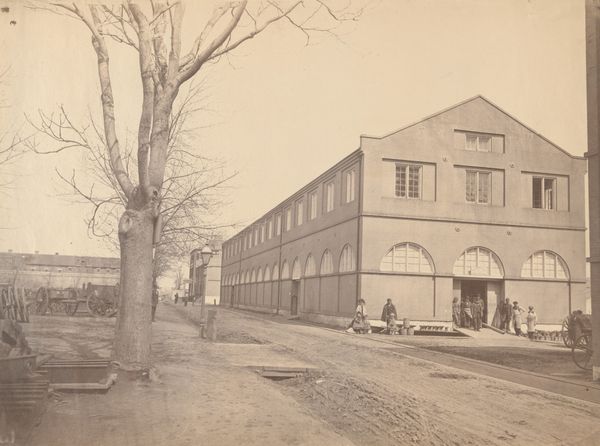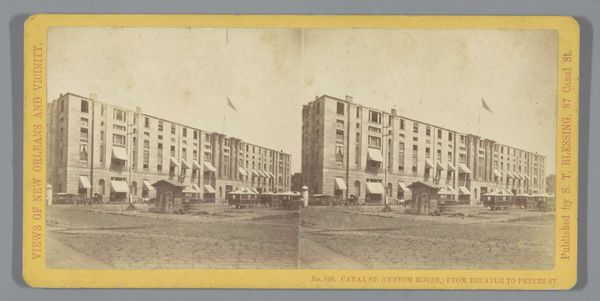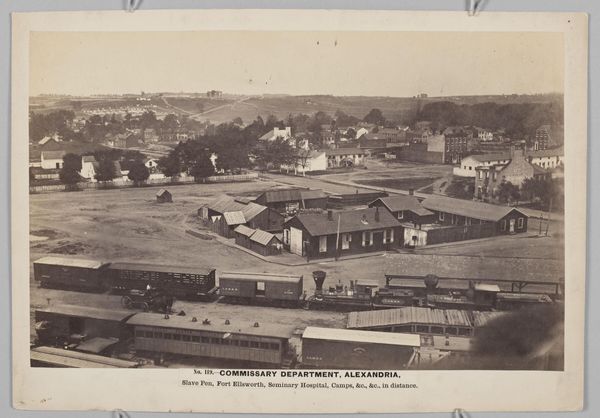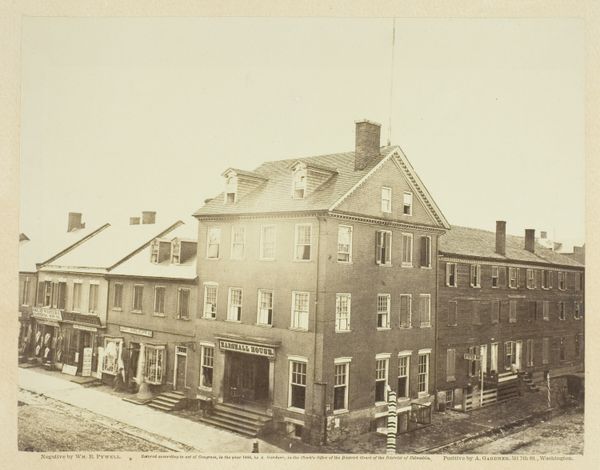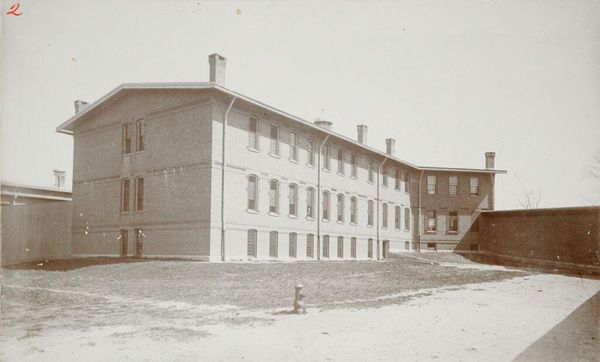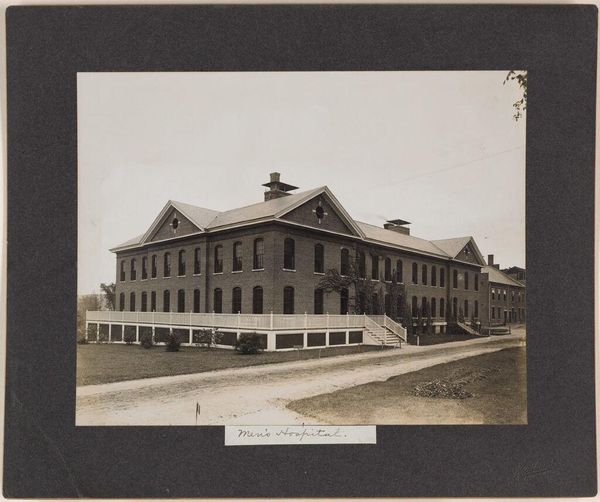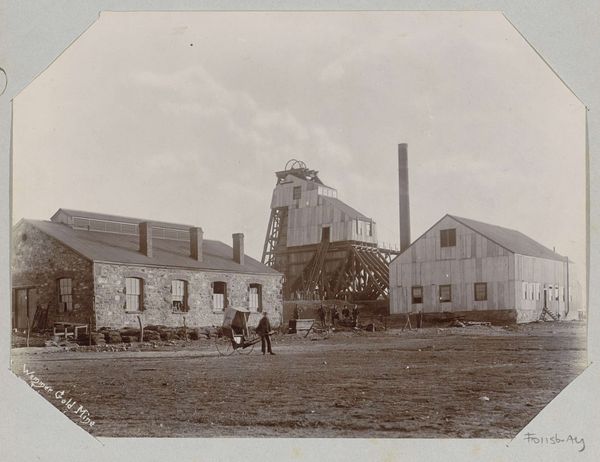
print, photography, gelatin-silver-print
# print
#
landscape
#
photography
#
gelatin-silver-print
#
history-painting
Dimensions: 17.7 × 22.9 cm (image/paper); 31.2 × 44.7 cm (album page)
Copyright: Public Domain
Editor: This is Alexander Gardner's "Libby Prison, Richmond, Virginia," a gelatin silver print from 1864. I find the image surprisingly still and stoic considering its subject matter; it's hard to fathom the human suffering that occurred within those walls. How should we interpret this work from a historical perspective? Curator: That stillness, as you call it, speaks volumes about photography's unique position during the Civil War. Prior to photography, visual representations of war were romanticized history paintings. Gardner’s image, however, presented a stark, unembellished reality. Think about how this photograph entered the public consciousness. Editor: As documentation? As evidence? Curator: Precisely. Gardner wasn’t just recording a building; he was shaping a narrative. Libby Prison, infamous for its appalling conditions, became a potent symbol in the North. The photograph was exhibited and circulated widely. This contributed to shaping public opinion about the Confederacy, transforming a physical space into a potent propaganda tool. What effect do you think the very visible flag has in this depiction? Editor: It’s… triumphant, almost. It asserts a Union presence even amidst this symbol of Confederate cruelty. It's not just a record; it is part of an argument. Curator: Exactly. The photograph, reproduced and distributed, fueled the Union cause by visually documenting Confederate atrocities. This image existed not in isolation, but within a complex web of political and social forces. How does viewing art change when you realize the social implication behind the photograph? Editor: It definitely changes the way I see this image. It's a grim reminder that art doesn’t exist in a vacuum. I never considered how photography could be explicitly used for political messaging during wartime. Curator: It highlights photography's power and it demonstrates the impact and meaning attributed to photograph even in art today.
Comments
No comments
Be the first to comment and join the conversation on the ultimate creative platform.
